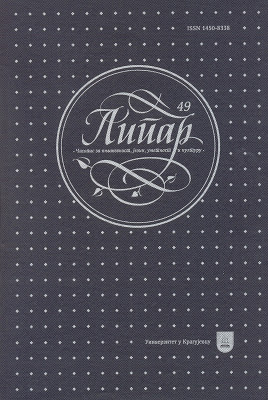HOMOEROTICISM IN OSCAR WILDE’S THE
PICTURE OF DORIAN GRAY: THREE PERSPECTIVES
HOMOEROTICISM IN OSCAR WILDE’S THE
PICTURE OF DORIAN GRAY: THREE PERSPECTIVES
Author(s): Jelena ZdravkovićSubject(s): Language and Literature Studies, Studies of Literature, Other Language Literature, Philology
Published by: Универзитет у Крагујевцу
Keywords: Aestheticism;Art;Beauty;Wilde
Summary/Abstract: Written by the “ultimate aesthete”, Oscar Wilde, The Picture of Dorian Gray was one of the most notorious books published in Victorian England. As soon as it was published in 1890, it was met with harsh criticism of the public. It was considered decadent, because it exhibited elements of homosexual love and mocked the highest moral values of that time. Although it caused countless controversies, this novel represented a real refinement of aestheticism, with all its advantages and flaws. Using the method of analytical and synthetic approach, this paper analyzes each of the three main characters and their contemplation of the philosophy they had chosen to live by, aiming to show three different points of view of aestheticism. Lord Henry is the speaker in the novel. He expounds to Dorian the philosophy of aestheticism which appeals to the young, beautiful man, but he has never actually done any of the things he has inspired Dorian to do. Dorian becomes a fallen aesthete, because he distorts this philosophy, causing pain to anyone who accompanied him. Basil acquires the status of spokesman of standard morality. He introduces the novel as the creator of the painting and concludes it as a victim of his own masterpiece.In the end I made a conclusion that the novel cannot be considered immoral, because all three main characters have been punished for exaggerating in aestheticism and its doctrine.
Journal: Липар - часопис за књижевност, језик, уметност и културу
- Issue Year: XIII/2012
- Issue No: 49/1
- Page Range: 253-266
- Page Count: 14
- Language: English

